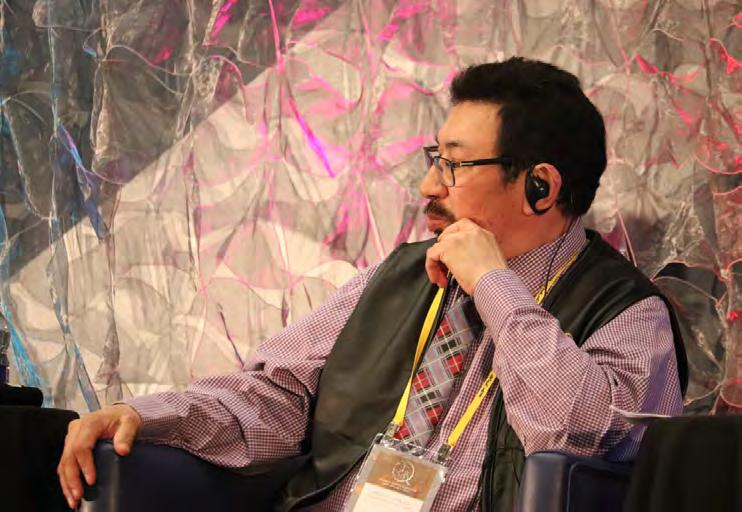
2 minute read
Training opportunities paramount to ensure Inuit participation in mining industry, says RIA representatives
Inuit need to take pride in work, says Kivalliq Inuit Association COO
By
Wright
Up to 10,000 young Nunavummiut are expected to enter the workforce in the coming years. A common theme for two panel discussions which took place at the Nunavut Mining Symposium on April 26.
The first panel discussion on this topic took place between Nunavut Tunngavik Incorporated vice-president Paul Irngaut, Qikiqtani Inuit Association vice-president Levi Barnabas and Kivalliq Inuit Association chief operating officer Gabriel Karlik.
The president of the Kitikmeot Inuit Association Robert Greenly was slated to also speak, however he was unable to attend due to flight delays coming into Iqaluit.

“We need to look at the youth and prepare them,” said Irngaut.
Nunavut’s youth are expected to be tomorrow’s leaders in Canada’s youngest territory and the speakers emphasised the need to get them ready.
“The biggest thing we see at KIA is that education and training can be the biggest aspect of our territory. We’re such a young territory where the majority are our youth,” said Karlik. Housing, education and training opportunities are paramount in this regard, he adds, saying people have to be proud of what they’re doing in order to encourage more to come on board with training.
“Take that next step, allow them to take pride in what they’re going to do and then nurture it some more.”
“Nothing is given to you, you have to work hard for it. People who are working hard, we have to promote them up,” said Karlik, and to allow these hard workers to help others who are falling behind.
“We’re trying to build youth capacity,” adds Irngaut, saying people learn faster with on the job training.
It’s not just education in people that need nurturing, but also the education system itself, says the QIA vice-president, who worked with the education transition team during Nunavut’s creation in 1999.

Barnabas added Nunavut’s training landscape was hindered during the creation of Nunavut, with programs falling to the side as the two governments were seeking a debtfree transition.
“We started an (Inuktitut) educational program from grade seven to grade 12 and then transition happened,” said Barnabas, “at that time I remember both governments, NWT and Nunavut, didn’t want any deficits.”
Programs available before were no longer available after Nunavut was created, to get back from this, Barnabas advocated the return of different school boards such as health or language to advocate for better programming in these areas as well as to encourage training in careers such as mining.
When it comes to mining, said Irngaut, he said companies need to keep in mind that Inuit still largely get their food from the land, through hunting, fishing and trapping. Particularly the times when they can’t afford food at the local grocery stores.
Despite ongoing issues around Nunavut’s education system and training Inuit for the workforce, Irngaut remains optimistic for today’s young people, who he says are very smart and are always learning new things.
“These little kids are playing with phones that, when I was growing up, never existed. Even though they might not be fully educated, they have that technology. I’m really hopeful for the future even though we need to be training more young people.”










